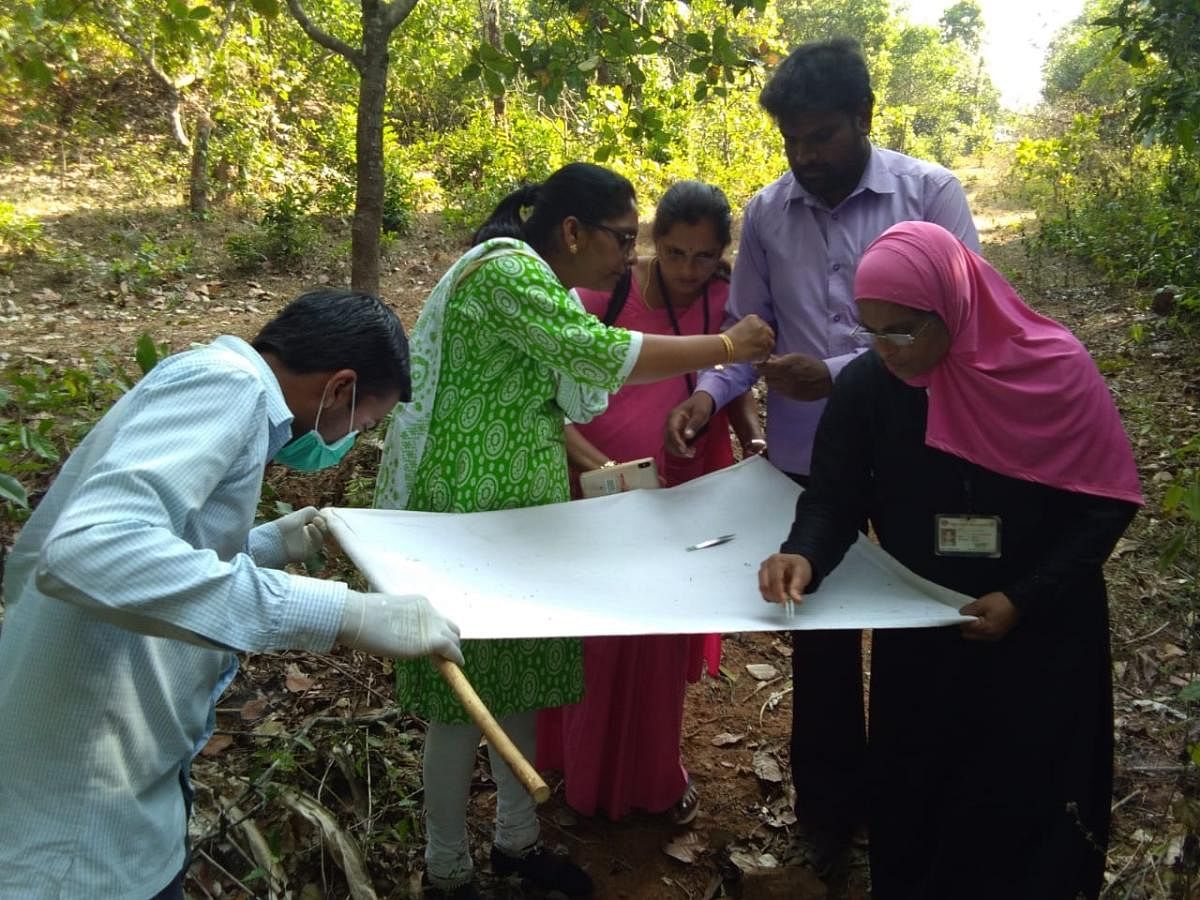
The re-emergence of Kyasanur Forest Disease (KFD) with more virulent characteristics has left researchers and health officials in the state worried. While the health department has not gone beyond its usual awareness and annual vaccination programme, an Indo-UK research project funded by the Global Challenges Research Fund Foundation, UK has been actively carrying out research in various affected regions across the Southern Peninsula.
There were attempts made to study the viral strains and its origin in the past, but were abandoned half-way-through owing to the lack of funds. According to researchers, the only identical virus to KFD is the Russian spring-summer encephalitis virus and studies had been conducted to trace the origin of the virus to migratory birds from the Siberian region. Noted ornithologist, Salim Ali, had also attempted to study the genesis by collecting blood and tick samples from migratory birds. But, the paucity of funds affected the study.
Dr Gudadappa Kasabi, a senior health officer in Shivamogga district and part of the research team, opined that the KFD virus is highly pathogenic with a mortality rate of 2 to 10% over the years. “The virus may be seen in all animal species like livestock, bats, rodents or squirrels. Perhaps the antibodies in these non-primate animals may have neutralised the KFD and curtailed the further transmission of the virus. But in primate species, monkeys mainly serve as amplifying hosts,” he explained.
With the common name of ‘monkey disease’, often people falsely assume that monkeys are responsible for the outbreak. “Monkeys, just like humans, are also victims in the case of KFD as they are also infected with the virus. Similarly, the ticks too are just the transmitters of the virus when they bite monkeys and humans.
Virus transmission
“Ticks larvae develop in large numbers in September — post monsoon and reach their nymphal stage in winter — November and December beginning to feed on multiple hosts and get ready to transmit KFD virus till the month of March. As per entomologists, as many as 16 different species of ticks are capable of transmitting KFD. Malnad region is abundant with Haemaphysalis spinigera and turturica species. In about 90% of the cases, it is Haemaphysalis spinigera which inflicts the virus in winter as it is not seen during the rainy season. But turturica can be seen in the rainy season as well,” he told DH. In the wake of the outbreak, entomologists divided into four teams have been flagging patches of forests, collecting ticks’ pool for the study.
According to Dr Kiran, none of the ticks’ pool collected by way of flagging in Sagar region tested positive for KFD bewildering the health officials. Contrary to findings during the initial years when more number of langurs (Semnopithecus entellus), which are the predominant primate species in the Malnad region died due to KFD virus, of late it is only the common bonnet monkeys (Macaca radiata) that are dying in the forests.
Of the visceral samples collected in the last two months, 90% of the samples belonged to bonnet macaques. Fortunately, the endangered lion-tailed macaques, which also share the same habitation are assumed to be safe from KFD infection.
In the absence of an effective treatment, many public health professionals suggest that preventive care is the only weapon against KFD currently. “Other than the symptoms-based treatment given currently, preventive measures like a vaccine and use of tick repellent solutions are the only hopes,” explained Dr T S Prabhakar, Director, Health and Family Welfare Department. But on the flip side, the formalin-inactivated tissue culture vaccine also can not ensure 100% immunity to the people, suggest field officials.
The first dose of vaccine only provides 58% and the second dose will make it 62% effective. Further, the person will gain immunity only after 60-90 days from the date of administering the vaccine. With a booster dose nine months later, it will give an immunity power of 82%. For achieving complete immunity, the person along with vaccine has to smear the exposed body parts with DMP oil (tick repellent) supplied by the government.
Like any other vaccine, the KFD vaccine too is riddled with myths that health workers are trying their best to clear from the minds of the people. “People are afraid of the burning sensation and pain at the injected area due to formalin content in the vaccine. Besides, as the vaccine is administered by the subcutaneous route, the needle has to be thick. These factors deter many from taking the vaccine. Also, the dropout rate after the first dose is more than 60%. All these factors have affected the vaccination drive. But with the fear psychosis now and more media attention, people are queuing up for the vaccine,” revealed a senior official at Aralagodu PHC.
Initially, the state government had set up a vaccine depot in Shivamogga to cater to the KFD requirement. However, officials say that the depot had to be shifted to Hebbal in Bengaluru after impurities and contamination crept into the preparatory process. Further, the preparation of vaccine is also a laborious process as it requires at least three months to produce a batch of vaccine after clearing all the relevant tests. “One vial of vaccine can be administered to 10 adults and 20 kids. While it costs Rs 45 for one vaccine, the DMP oil bottle (55 ml) costs Rs 65 and currently supplied only by the government and not available over the counter,” clarified a staff nurse at the PHC.
Read also: DH InSight | Govt dithers as monkey fever epidemic spreads
